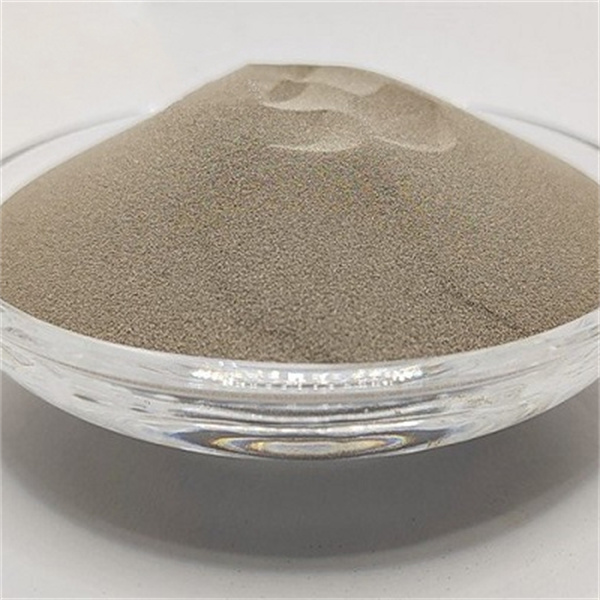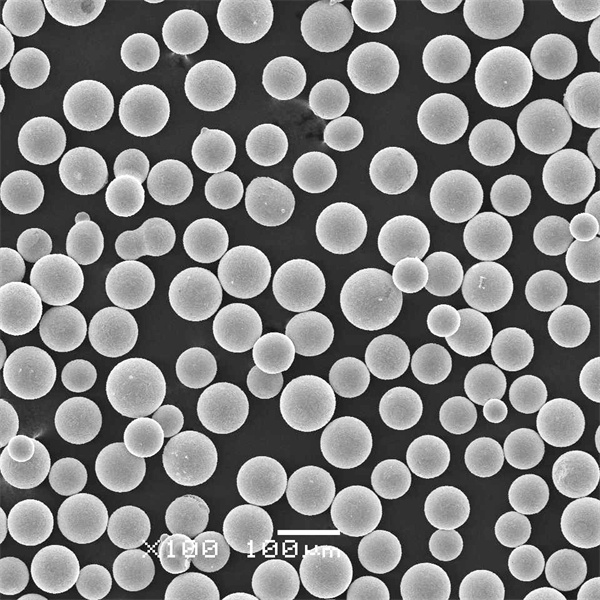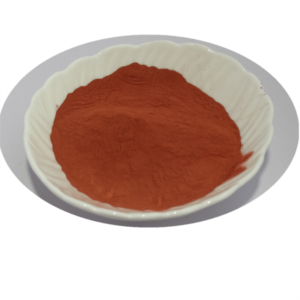概述 钨金属粉末
金属钨粉是指主要由钨元素组成的细颗粒材料,可用于各种工业应用。其主要特性包括极高的密度、强度、硬度和高温耐久性。
钨粉的常见应用包括
- 碳化钨复合材料
- 钨重合金
- 热喷涂涂层
- 快速成型制造
- 电气触点
- 辐射屏蔽
钨因其独特的性能和不稳定的供应动态而被视为一种重要的原材料。继续阅读,了解有关钨粉的规格、加工、价格和用途的更多信息。

金属钨粉的材料类型
钨金属粉末有几种主要成分:
| 类型 | 典型等级 | 组成 |
|---|---|---|
| 纯钨 | 99.9%, 99.99% 纯度 | 钨元素杂质限值 |
| 氧化物分散钨 | 添加 Y2O3 | 含 0.5-1% 氧化钇纳米颗粒的钨 |
| 掺杂钨 | 镧或其他掺杂剂 | 添加晶粒生长抑制剂的钨 < 1% 级 |
表 1: 钨金属粉末的常见材料类别取决于应用需求
特殊的掺杂剂或氧化物添加剂有助于在最终用户组件和需要高温稳定性的部件中整合粉末特性。
主要特性
| 物业 | 典型值 | 重要意义 |
|---|---|---|
| 密度 | 19.3 克/立方厘米 | 提供出色的质量和辐射阻隔 |
| 熔点 | 3410°C | 在大多数金属失效的极端温度下仍能保持强度 |
| 极限拉伸强度 | 550-620 兆帕 | 材料相对较脆,拉伸延展性适中 |
| 硬度 | HV 300-350 | 硬度高于工具钢 |
| 杨氏模量 | 350-410 GPa | 坚硬,不易变形 |
| 导热性 | 165 W/mK | 适用于在高温下工作的热管理部件 |
表 2: 钨金属粉末和固结合金的机械和物理特性概述
无与伦比的耐温性能和高密度使其在要求苛刻的能源、航空航天、国防和电子应用中得到广泛采用。
粒子特征 钨金属粉末
典型的钨粉形态:
| 参数 | 详细信息 |
|---|---|
| 纯净 | 99.9% 至 99.999% 可用 |
| 粒子形状 | 不规则、有棱有角 |
| 尺寸分布 | 典型值为 1 至 100 微米 |
| 氧气含量 | <100 ppm |
| 表面氧化层 | <厚度小于 50 纳米 |
表 3: 用于各种固结工艺的钨金属粉末的粉末质量指标
在粉末处理过程中必须注意防止氧化。根据最终零件密度和晶粒结构目标定制化学成分。
生产流程
- 生产钨金属粉末的主要方法:
- 氢气还原(使用氢气将氧化物原料转化为粉末)
- 热敏过程还原(氧化物与金属的放热反应产生粉末)
- 二次机械加工:
- 喷射研磨(通过碰撞将原料粉碎成细颗粒)
- 旋转电极工艺(电极旋转和熔体分解)
- 典型的粉末部件加固技术:
- 热等静压
- 烧结
- 快速成型制造(SLM、EBM)
- 环境和处理注意事项:
- 在氩气环境下惰性储存 <40°C
- 处理手套箱以防止氧化
应用 钨金属粉末
金属钨粉在各行各业的主要用途:
| 分段 | 应用 | 使用原因 |
|---|---|---|
| 工业 | 碳化钨材料 | 用于加工和采矿工具的极高硬度和韧性 |
| 国防 | 动能穿甲弹 | 卓越的密度特性 |
| 航空航天 | 火箭发动机喷嘴 | 在极端环境中保持材料强度 |
| 能源 | 隔热罩、等离子割炬组件 | 在高温条件下也能达到其他产品的性能 |
| 电子产品 | 电气触点 | 抗电弧性与热/导电性能相结合 |
表 4: 钨金属衍生部件在各行业的主要应用领域概述
钨广泛应用于在极端温度或负载条件下对硬度、密度、韧性和强度要求极高的产品中。
成本分析
典型的钨粉价格:
| 参数 | 详细信息 |
|---|---|
| 粉末价格 | 每公斤 $50 至 $350 |
| 合并零件价格 | 每公斤 $100+ |
| 加工产量 | 60-70% |
| 主要供应商 | 中国、奥地利、葡萄牙、美国、俄罗斯 其他国家 |
| 前导时间 | 经常为 6-12 周 |
表 5: 购买因素,包括钨产品的原材料成本
消费者报告称,钨市场价格波动剧烈,导致预算规划困难重重。已建立的合作伙伴关系和供应协议降低了风险。
优点和缺点
优势
- 极高的密度有助于屏蔽辐射
- 在大多数金属熔化的 3000°C 以上温度下仍能保持强度
- 相对中性的材料可避免污染
- 粉末形态支持某些 AM 工艺的复杂几何形状
- 部件固化后,硬度与工具钢相似
缺点
- 脆性特征意味着拉伸延展性低
- 难以使部件完全致密而不产生针孔和空隙
- 需要专门的冷壁真空设备进行熔化
- 供应链中断影响供应的风险
- 氧化风险需要控制处理
- 与钢制替代品相比非常昂贵

常见问题
问:各种应用中使用的钨粉的典型粒度范围是什么?
答:大多数常见的粒度分布在 1-100 微米之间。更细的颗粒能更好地填充,有助于充分致密化,但也有处理问题。颗粒工程取决于加固方法,AM 的范围一般为 10-45 微米,硬质合金复合材料则使用亚微米级的粉末。
问:钨金属粉末中可以加入哪些合金元素?
答:典型的合金添加剂如镍、铁和铜会严重降低高温性能,因此很少添加。铼能稍微改善延展性。氧化物微粒有助于控制晶粒尺寸。稀土掺杂剂也能稳定性能。为保持纯度,合金的选择仅限于小添加剂。
问:对钨粉有哪些建议的储存和处理注意事项?
答:与其他对空气敏感的材料一样,金属钨粉应在惰性氩气中保存,温度应低于 40°C,以防止湿气或氧气氧化。手套箱规程是必要的,包括泄漏检查。在处理过程中切勿与有机物接触,以防止污染或反应。
问:钨粉是否需要危险品分类和特殊运输?
答:元素钨金属粉末是良性的,不会产生反应。与其他工业原料类似,它可以用经批准的包装进行正常货运。与被视为危险混合物的钴含量受控的硬质合金不同,不需要特殊的危险品分类。
问:哪些下游零件生产工艺与钨粉原料兼容?
答:热等静压和烧结可产生标准的加固部件,如砝码或隔热板。通过粉末床融合进行快速成型制造,可以制造出其他方法无法实现的复杂几何形状。粉末还可用作需要后固结的热喷涂涂层原料。







